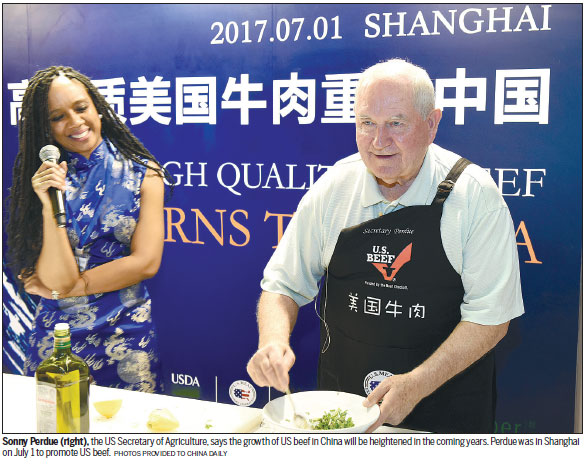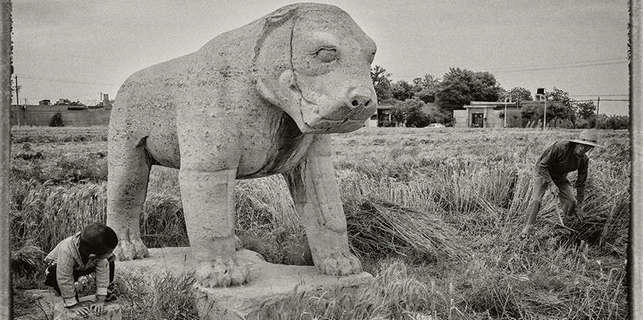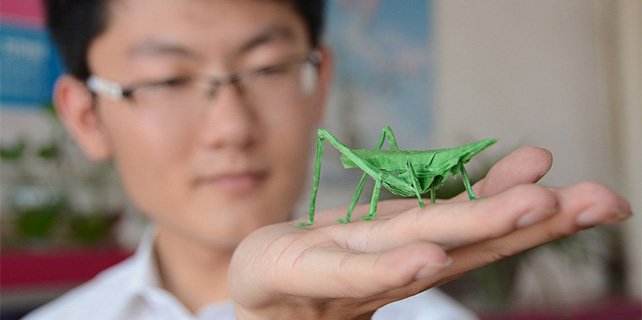Moo-ving back into China

Warm reception
On Womai.com, a 180-gram US ribeye costs 38 yuan in a group purchase special, almost 50 percent higher than a similar deal for Australian beef of the same cut and size. Despite the price tag, interest in US beef is still high. Both websites have managed to sell their first batch of meat, 300 kg from Womai and 700 kg from Yiguo, within four days.
"US beef has been one of our top searches on the website over the past week," said Tang Xizhen, director of Womai's fresh produce department.
The two websites said that the major clientele of their platforms are those who are aged between 30 and 40 years old, have an above-average income, are open-minded about Western lifestyles and culinary habits, and prefer shopping for food and fresh produce on online platforms than at traditional wet markets.
The growing trend of healthy eating has also been boosting the popularity of beef, which is preferred over pork because of its higher protein and lower fat content. According to Yiguo, its beef sales have grown by 250 percent annually in recent years.
Accessibility is key
Peter's Gourmet, a chain fast-food-style steakhouse in Shanghai, is one of the companies that has capitalized on the growing interest in beef.
A subsidiary of Taiwan dining conglomerate Topping Cuisine International Holding Ltd, Peter's Gourmet was founded in Shanghai in 2014 as a butchery chain to make up for the stagnant business in the group's steakhouse chain Bullfighter's, which was affected by the expansion of international restaurant chains in China.
The brand's approach has been to make the meat convenient to eat and affordable to the masses. Its street-vendor-style stores offer pan-fried, on-the-go portions and is a popular lunch destination for office workers who are strapped for time. A portion of steak at Peter's Gourmet costs between 50 and 80 yuan.
In 2016, Peter's Gourmet opened its second location in Shanghai and grew its presence to 47 locations in more than 20 Chinese cities within one year. Tang Cheng, general manager of Peter's Gourmet, said that its shops in China sell a combined total of 40 tons of beef every month.
"We will have 150 stores by next year, which is a modest plan considering how the number of copycats stores outnumber ours by more than 10 times," said Tang.
Despite robust growth, China's beef market is still in a nascent stage where consumers are unfamiliar with the finer details of the product.
"We still see people comparing the price of US fresh prime cuts with Brazilian frozen flank simply because they are under the same category of beef. Also, the majority of beef sold from our website is still prepared in a Chinese way - cooked in soup, braised or wok fried," said Yang from Yiguo.
"Chinese consumers don't really care about the type of cut or whether the cow was grass-fed or grain-fed. There is only one criteria when it comes to meat - tenderness, be it pork or lamb or beef."

Liang shared a similar opinion.
"I think price is still the primary concern for most people. I agree US beef is richer and more flavorful. But it's not delicious enough to convince increasingly savvy Chinese consumers to pay so much more," he said, before explaining that the retail price of the first batch of US beef in China is about 30 times higher than in the US because of taxes and transportation cost.
But Liang is nevertheless determined to get his hands on some US beef for his butchery.
"As long as we have access to it, we will definitely sell it. It won't be an authentic butchery without US beef," said Liang.
"Besides, there are lots of rich people in China who can afford to buy such premium meat."
xujunqian@chinadaily.com.cn









